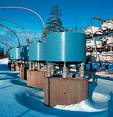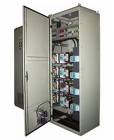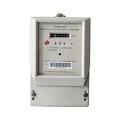Influence of higher harmonics of voltage and current on the operation of electrical equipment
The higher voltage and current harmonics affect the elements of power systems and communication lines.
The main forms of influence of higher harmonics on power systems are:
-
increase in currents and voltages of higher harmonics due to parallel and series resonances;
-
reducing the efficiency of the production, transmission, use of electricity processes;
-
aging of electrical equipment insulation and resulting reduction in its service life;
-
false operation of the equipment.
Influence of resonances on systems
 Resonances in power systems are usually considered in terms of capacitors, particularly power capacitors. When the harmonics of the current exceed the maximum permissible levels for capacitors, the latter do not deteriorate their performance, but fail after a while.
Resonances in power systems are usually considered in terms of capacitors, particularly power capacitors. When the harmonics of the current exceed the maximum permissible levels for capacitors, the latter do not deteriorate their performance, but fail after a while.
Another area where resonances can cause equipment damage is in overtone load control systems. To prevent the signal from being absorbed by the power capacitors, their circuits are separated by a tuned series filter (filter-«notch»). In the case of local resonance, the harmonics of the current in the power capacitor circuit increase sharply, which leads to damage to the tuned capacitor of the series filter.
In one of the installations, filters tuned to a frequency of 530 Hz with a pass current of 100 A blocked each circuit of a power capacitor that had 15 sections of 65 kvar. Capacitors these filters failed after two days. The reason was the presence of a harmonic with a frequency of 350 Hz, in the immediate vicinity of which resonance conditions were established between the tuned filter and the power capacitors.
Effect of harmonics on rotating machines
 Voltage and current harmonics lead to additional losses in the stator windings, in the rotor circuits, and in the stator and rotor steel. The losses in the stator and rotor conductors due to eddy currents and surface effect are greater than those determined by the ohmic resistance.
Voltage and current harmonics lead to additional losses in the stator windings, in the rotor circuits, and in the stator and rotor steel. The losses in the stator and rotor conductors due to eddy currents and surface effect are greater than those determined by the ohmic resistance.
The leakage currents caused by harmonics in the end zones of the stator and rotor lead to additional losses.
In a tapered rotor induction motor with pulsating magnetic flux in the stator and rotor, the higher harmonics cause additional losses in the steel. The magnitude of these losses depends on the angle of inclination of the slots and the characteristics of the magnetic circuit.
The average distribution of losses from higher harmonics is characterized by the following data; stator winding 14%; rotor chains 41%; end zones 19%; asymmetrical wave 26%.
Except for asymmetric wave losses, their distribution in synchronous machines is approximately the same.
It should be noted that adjacent odd harmonics in the stator of a synchronous machine cause harmonics of the same frequency in the rotor. For example, 5th and 7th harmonics in the stator cause 6th order current harmonics in the rotor, spinning in different directions. For linear systems, the average loss density on the rotor surface is proportional to the value, but due to the different direction of rotation, the loss density at some points is proportional to the value (I5 + I7) 2.
Additional losses are one of the most negative phenomena caused by harmonics in rotating machines. They lead to an increase in the overall temperature of the machine and to local overheating, most likely in the rotor. Squirrel cage motors allow higher losses and temperatures than wound rotor motors. Some guidelines limit the allowable negative sequence current level in the generator to 10% and the negative sequence voltage level at the induction motor inputs to 2%. The tolerance of harmonics in this case is determined by what levels of negative sequence voltages and currents they create.
 The torques generated by harmonics. The harmonics of the current in the stator give rise to the corresponding torques: harmonics forming a positive sequence in the direction of rotation of the rotor, and forming a reverse sequence in the opposite direction.
The torques generated by harmonics. The harmonics of the current in the stator give rise to the corresponding torques: harmonics forming a positive sequence in the direction of rotation of the rotor, and forming a reverse sequence in the opposite direction.
Harmonic currents in the stator of the machine cause a driving force, which leads to the appearance of torques on the shaft in the direction of rotation of the harmonic magnetic field. They are usually very small and are also partially offset due to the opposite direction. However, they can cause the motor shaft to vibrate.
Influence of harmonics on static equipment, power lines. Current harmonics in the lines lead to additional losses of electricity and voltage.
In cable lines, voltage harmonics increase the effect on the dielectric in proportion to the increase in the maximum value of the amplitude. This in turn increases the number of cable failures and repair costs.
In EHV lines, voltage harmonics can cause an increase in corona losses for the same reason.
Influence of higher harmonics on transformers
Voltage harmonics cause an increase in hysteresis losses and eddy current losses in the steel in transformers, as well as winding losses. The service life of the insulation is also reduced.
The increase in winding losses is most important in a step-down transformer because the presence of a filter, usually connected to the AC side, does not reduce current harmonics in the transformer. Therefore, it is necessary to install a large power transformer. Local overheating of the transformer tank is also observed.
A negative aspect of the effect of harmonics on high power transformers is the circulation of triple zero sequence current in delta connected windings. This can overwhelm them.
Influence of higher harmonics on capacitor banks
 The additional losses in the electrical capacitors lead to overheating them. In general, capacitors are designed to withstand a certain current overload. Capacitors produced in Great Britain allow an overload of 15%, in Europe and Australia - 30%, in the USA - 80%, in the CIS - 30%. When these values are exceeded, observed in conditions of increased voltage of higher harmonics at the inputs of the capacitors, the latter overheat and fail.
The additional losses in the electrical capacitors lead to overheating them. In general, capacitors are designed to withstand a certain current overload. Capacitors produced in Great Britain allow an overload of 15%, in Europe and Australia - 30%, in the USA - 80%, in the CIS - 30%. When these values are exceeded, observed in conditions of increased voltage of higher harmonics at the inputs of the capacitors, the latter overheat and fail.
Influence of higher harmonics on power system protection devices
Harmonics can interfere with the operation of protective devices or impair their operation. The nature of the violation depends on the principle of operation of the device. Digital relays and algorithms based on discretized data analysis or zero-crossing analysis are particularly sensitive to harmonics.
Most often, changes in characteristics are minor. Most types of relays will operate normally up to a distortion level of 20%. However, increasing the share of power converters in networks may change the situation in the future.
The problems arising from harmonics are different for normal and emergency modes and are discussed separately below.
Impact of harmonics in emergency modes
 Protection devices usually respond to the fundamental frequency voltage or current and any transient harmonics are either filtered out or do not affect the device. The latter is characteristic of electromechanical relays, especially used in overcurrent protection. These relays have a high inertia, which makes them practically insensitive to higher harmonics.
Protection devices usually respond to the fundamental frequency voltage or current and any transient harmonics are either filtered out or do not affect the device. The latter is characteristic of electromechanical relays, especially used in overcurrent protection. These relays have a high inertia, which makes them practically insensitive to higher harmonics.
More significant is the influence of harmonics on protection performance based on resistance measurement. Distance protection, where the resistance is measured at the fundamental frequency, can give significant errors in the presence of higher harmonics in the short-circuit current (especially of the 3rd order). High harmonic content is usually observed when short-circuit current flows through ground (ground resistance dominates the total loop resistance). If the harmonics are not filtered, the probability of false operation is very high.
In the case of a metallic short circuit, the current is dominated by the fundamental frequency. However, due to the saturation of the transformer, secondary curve distortion occurs, especially in the case of a large DC component in the primary current. In this case, there are also problems with ensuring the normal operation of the protection.
In steady-state operating conditions, the nonlinearity associated with transformer overexcitation causes only odd-order harmonics. All kinds of harmonics can occur in transient modes, with the largest amplitudes usually being the 2nd and 3rd.
However, with proper design, most of the listed problems are easily solved. Choosing the right equipment eliminates many of the difficulties associated with measuring transformers.
Harmonic filtering, especially in digital protections, is most important for distance protection. The work carried out in the field of digital filtering methods has shown that although the algorithms for such filtering are often quite complex, obtaining the desired result does not present particular difficulties.
The influence of harmonics on protective systems during normal operating modes of electrical networks. The low sensitivity of the protective devices to the mode parameters under normal conditions leads to the practical absence of problems associated with harmonics in these modes. An exception is the problem associated with the inclusion of powerful transformers in the network, accompanied by a surge in the magnetizing current.
The amplitude of the peak depends on the inductance of the transformer, the resistance of the winding and the moment at which the turn-on is turned on. The residual flux at the instant before switching on slightly increases or decreases the amplitude, depending on the polarity of the flux relative to the initial value of the instantaneous voltage. Since there is no current on the secondary side during magnetization, a large primary current can cause the differential protection to trip falsely.
 The easiest way to avoid false alarms is to use a time delay, but this can cause serious damage to the transformer if an accident occurs while it is on. In practice, the second harmonic present in the inrush current, uncharacteristic of networks, is used to block the protection, although the protection remains quite sensitive to internal faults of the transformer during switching on.
The easiest way to avoid false alarms is to use a time delay, but this can cause serious damage to the transformer if an accident occurs while it is on. In practice, the second harmonic present in the inrush current, uncharacteristic of networks, is used to block the protection, although the protection remains quite sensitive to internal faults of the transformer during switching on.
Effect of harmonics on consumer equipment
The influence of higher harmonics on televisions
Harmonics that increase the peak voltage can cause image distortion and change in brightness.
Fluorescent and mercury lamps. The ballasts of these lamps sometimes contain capacitors and under certain conditions resonance can occur, resulting in lamp failure.
Effect of higher harmonics on computers
There are limits to the permissible levels of distortion in the networks that power computers and data processing systems. In some cases, they are expressed as a percentage of the nominal voltage (for a computer IVM — 5%) or in the form of the ratio of the peak voltage to the average value (CDC sets its permissible limits at 1.41 ± 0.1).
The influence of higher harmonics on converting equipment
Notches in the sinusoidal voltage that occur during valve switching can affect the timing of other similar equipment or devices that are controlled during the zero voltage curve.
The influence of higher harmonics on thyristor-controlled speed equipment
In theory, harmonics can affect such equipment in several ways:
-
the notches of the sine wave cause a malfunction due to misfiring of the thyristors;
-
voltage harmonics can cause misfires;
-
the resulting resonance in the presence of various types of equipment can lead to surges and vibrations of machines.
The impacts described above may be felt by other users connected to the same network. If the user has no difficulties with thyristor-controlled equipment in their networks, it is unlikely that it will affect other users. Consumers powered by different buses can theoretically influence each other, but the electrical distance reduces the likelihood of such interaction.
Effect of harmonics on power and energy measurements
 Measuring devices are usually calibrated to pure sinusoidal voltages and increase uncertainty in the presence of higher harmonics. The magnitude and direction of the harmonics are important factors because the sign of the error is determined by the direction of the harmonics.
Measuring devices are usually calibrated to pure sinusoidal voltages and increase uncertainty in the presence of higher harmonics. The magnitude and direction of the harmonics are important factors because the sign of the error is determined by the direction of the harmonics.
Measurement errors caused by harmonics are highly dependent on the type of measuring instruments. Conventional induction meters typically overestimate readings by a few percent (6% each) if the user has a source of distortion. Such users are automatically penalized for introducing distortions into the network, so it is in their own interest to establish appropriate means of suppressing these distortions.
There is no quantitative data on the influence of harmonics on the accuracy of peak load measurement. It is assumed that the influence of harmonics on the accuracy of the peak load measurement is the same as on the accuracy of the energy measurement.
Accurate measurement of energy, regardless of the shape of the current and voltage curves, is provided by electronic meters, which have a higher cost.
Harmonics affect both the accuracy of the reactive power measurement, which is clearly defined only in the case of sinusoidal currents and voltages, and the accuracy of the power factor measurement.
The influence of harmonics on the accuracy of inspection and calibration of instruments in laboratories is rarely mentioned, although this aspect of the matter is also important.
The influence of harmonics on communication circuits
Harmonics in power circuits cause noise in communication circuits.A low level of noise leads to some discomfort, as it increases, part of the transmitted information is lost, in extreme cases, communication becomes completely impossible. In this regard, with any technological changes in power supply and communication systems, it is necessary to take into account the influence of power lines on telephone lines.
The effect of harmonics on telephone line noise depends on the order of the harmonics. On average, the telephone - the human ear has a sensitivity function with a maximum value at a frequency of the order of 1 kHz. To evaluate the influence of various harmonics on the noise c. the phone uses coefficients, which are the sum of the harmonics taken with certain weights. Two coefficients are most common: psophometric weighting and C-transmission. The first factor was developed by the International Consultative Committee on Telephone and Telegraph Systems (CCITT) and is used in Europe, the second — by the Bella Telephone Company and the Edison Electrotechnical Institute — is used in the United States and Canada.
Harmonic currents in the three phases do not fully compensate each other due to the inequality of amplitudes and phase angles and affect telecommunications with the resulting zero-sequence current (similar to earth fault currents and earth currents from traction systems).
The influence can also be caused by harmonic currents in the phases themselves due to the difference in distances from the phase conductors to nearby telecommunication lines.
These types of influences can be mitigated by proper selection of line traces, but in the case of unavoidable line crossings such influences occur.It is especially strongly manifested in the case of a vertical arrangement of the wires of the power line and when the wires of the communication line are transposed in the vicinity of the power line.
At large distances (more than 100 m) between the lines, the main influencing factor turns out to be the zero-sequence current. When the nominal voltage of the power line decreases, the influence decreases, but it turns out to be noticeable due to the use of common supports or trenches for laying low voltage power lines and communication lines.
